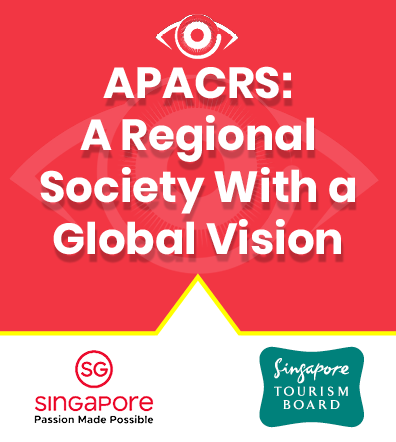Eyeworld Weekly Update |
Volume 20, Number 33 |
28 August 2015 |
- Allergan recalls several lots of eye drops for 'particulate matter'
- FDA: Int'l regs don't protect against contaminated IOLs
- FDA accepts BromSite NDA
- Lenstec starts FDA trials of implantable bifocal IOL
- First-in-human RP gene therapy trial to begin
- Sucampo to buy R-Tech Ueno
- Heidelberg licenses swept-source OCT technology
Allergan recalls several lots of eye drops for 'particulate matter'
Allergan is voluntarily recalling specific lots of its Refresh Lacri-Lube 3.5 g and 7 g for dry eye, Refresh PM 3.5g for dry eye, FML (fluorometholone ophthalmic ointment) 0.1% (sterile ophthalmic ointment topical anti-inflammatory agent for ophthalmic use, 3.5 g), and Blephamide (sulfacetamide sodium and prednisolone acetate ophthalmic ointment, USP) 10%/0.2% sterile topical ophthalmic ointment combining an antibacterial and a corticosteroid, 3.5 g, both the company and the Food and Drug Administration said in published news.
Allergan chose to initiate this recall based on a small number of customer complaints that reported a small black particle at the time of use. This black particle, which is part of the cap, can be created by the action of unscrewing the cap from the aluminum tube and potentially introduced into the product. If the particle gets into the eye, potential adverse events may include eye pain, eye swelling, ocular discomfort, or eye irritation, according to Allergan.
FDA: Int'l regs don't protect against contaminated IOLs
The Food and Drug Administration's final guidance on endotoxin testing for single-use intraocular ophthalmic devices was developed "in an effort to mitigate future toxic anterior segment syndrome (TASS) outbreaks," the report states.
Citing studies, the guidance notes international regulations that limit endotoxins to 0.5 endotoxin units/mL in IOLs is not stringent enough. The guidance instead recommends a limit of no more than 0.2 endotoxin units/mL for individual devices, regardless of whether it is supposed to be used in the front or back of the eye. (The FDA, therefore, does not recognize the endotoxin levels in the ISO 15798 or the ISO 11979-8 standards.)
FDA accepts BromSite NDA
The Food and Drug Administration has accepted a New Drug Application for BromSite (0.075% bromfenac ophthalmic solution, InSite Vision, Alameda, Calif.) for the treatment of inflammation and prevention of ocular pain in the post-cataract surgery setting, InSite Vision said. The FDA has assigned a Prescription Drug User Fee Act (PDUFA) action date of April 10, 2016.
Lenstec starts FDA trials of implantable bifocal IOL
Lenstec (St. Petersburg, Fla.) has begun a study on its segmented bifocal lens (SBL-3) in support of U.S. regulatory submission, the company announced. The SBL-3 is "the only bifocal lens available in quarter diopter power increments" for the distance vision segment, and has a +3 add for the near vision segment, Lenstec said. The lens is already approved in Europe, China, Korea, Taiwan, and some Latin American and Middle Eastern markets.
First-in-human RP gene therapy trial to begin
The Food and Drug Administration has approved an investigational new drug application for RST-001 for the treatment of retinitis pigmentosa (RP), developer RetroSense (Ann Arbor, Mich.) said in a news release.
RetroSense expects to initiate a phase 1/2 clinical trial by year end in order to evaluate the safety and, potentially, efficacy of RST-001. The compound is a first-in-class gene therapy application of optogenetics, a method of conferring light sensitivity to cells that were not previously, or natively, light sensitive.
RST-001 received orphan drug designation in 2014.
Sucampo to buy R-Tech Ueno
Sucampo (Bethesda, Md.) has launched an all-cash tender offer for Japan's R-Tech Ueno, for about $278 million, the company said. R-Tech Ueno is best known for the glaucoma medication Rescula (unoprostone isopropyl).
Heidelberg licenses swept-source OCT technology
Heidelberg Engineering (Heidelberg, Germany) has signed a patent license agreement and development program with Boston's Massachusetts General Hospital (MGH) covering swept-source optical coherence tomography (OCT) technology, the company announced.
RESEARCH BRIEFS
- Single intrastromal corneal ring segment (ICRS) implantation in eyes with moderate to severe keratoconus and inferiorly located cones is safe and effective, but developing a nomogram that can rely more on topographic data is highly recommended, according to a study in the Journal of Cataract & Refractive Surgery. D.C. Fahd and colleagues conducted a retrospective case series on 30 eyes. Uncorrected (UDVA) and corrected (CDVA) distance visual acuities, central and inferior maximum topographic keratometry (K) values, manifest cylinder, and spherical equivalent (SE) were recorded preoperatively and at 1 week and 1, 3, and 6 months postoperatively. The mean preoperative UDVA and CDVA were 20/86 and 20/42, respectively. The mean center K was 49.14±4.39 D; the mean maximum K, 56.78±6.02 D; and the mean center K - maximum K, -7.45±5.61 D. The mean SE and cylinder were -2.24±2.32 D and -4.33±1.43 D, respectively, with sphere ranging from +2.00 to -18.00 D. At 6 months, the UDVA improved to 20/32. The mean SE was -1.02±2.04 D (P=.0330); the mean cylinder, -1.67±1.00 D (P<.00); and the mean center K - maximum K, -4.92±4.36 D (P<.05). The CDVA improved more than 2 lines; no eye lost any lines. Topographic indices improved in all eyes.
- Topical nonsteroidal anti-inflammatory drugs (NSAIDs) significantly reduced the odds of developing cystoid macular edema (CME) when compared to topical corticosteroids in non-diabetic and mixed populations after cataract surgery, according to a new study. L.H. Wielders and colleagues conducted a systematic review and meta-analysis of randomized clinical trials to compare medical strategies for CME prevention after uncomplicated cataract surgery. Of the 17 studies that reported incidence rates, NSAIDs significantly reduced the odds of developing CME as compared to topical corticosteroids in non-diabetic and mixed populations. A combination of topical corticosteroids and NSAIDs significantly reduced the odds of developing CME as compared to topical corticosteroids in non-diabetic and diabetic patients. Intravitreal corticosteroid or anti-vascular endothelial growth factor injections did not show any additional benefit in diabetics. The study is published in the American Journal of Ophthalmology.
- The transverse ultrasound system was found to be possibly associated with less balanced salt solution use, less phacoemulsification time, and less power required than the torsional phaco system, according to Kerry Assil, MD, and colleagues. In their prospective, clinician-masked, contralaterally controlled single center evaluation, the group evaluated 54 eyes of 27 patients having similar degrees of cataract, astigmatism, and visual potential scheduled to undergo cataract surgery and multifocal IOL implantation. Patients were randomized to phaco with either a transverse ultrasound system or torsional handpiece system. Similar visual acuity was reported at all postoperative visits between the two groups. Mean phacoemulsification time and total power required were both significantly lower with the transverse system than with the torsional technique (P<0.05 for both). Similarly, mean total balanced salt solution used was significantly less with the transverse system vs. torsional (P<0.05). Postoperative safety demonstrated significantly lower endothelial cell loss at 1 day and 1 month (P<0.05) with transverse vs. torsional. Macular swelling was less at 1 week, 1 month, and 3 months with transverse vs. torsional, although the difference did not achieve significance (P=0.1) at any single time point. Clinically detectable corneal edema was reported less frequently at all postoperative time points with the transverse system. The study is published in Clinical Ophthalmology.
NEW PRODUCT BRIEFS
- Abbott Medical Optics (Abbott Park, Ill.) launched 3 new cylinder powers (4.50 D, 5.25 D, and 6.00 D) for its Tecnis Toric IOL, the company announced.
 Licensed Publications |
Licensed through ASCRS American Society of Cataract and Refractive Surgery, 4000 Legato Road, Suite 700, Fairfax, VA 22033-4003, USA.
All rights reserved. The ideas and opinions expressed in EyeWorld Asia-Pacific Weekly News do not necessarily reflect those of the ASCRS�ASOA or APACRS. Mention of products or services does not constitute an endorsement by the ASCRS�ASOA or APACRS. Copyright 2008, EyeWorld News Service, a division of ASCRS Media. |



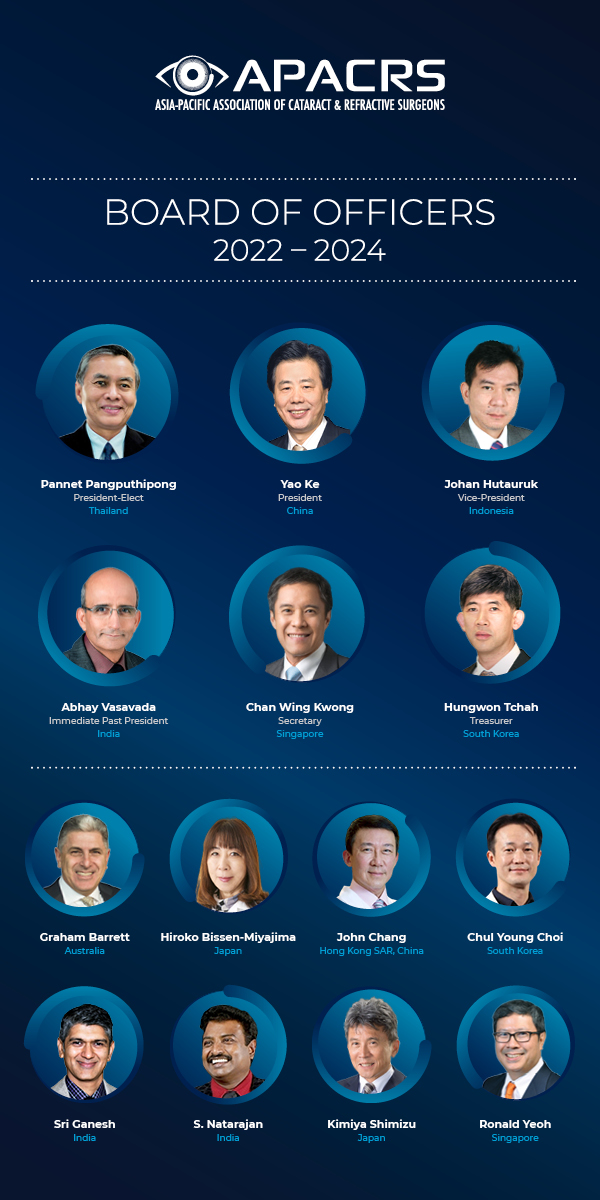
 EyeSustain Update
EyeSustain Update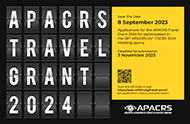 2024 APACRS TRAVEL GRANT
2024 APACRS TRAVEL GRANT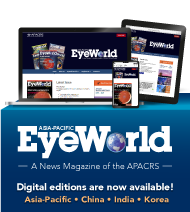 Digital EyeWorld
Digital EyeWorld VOL. 39 (2023), ISSUE 3
VOL. 39 (2023), ISSUE 3  Membership Information
Membership Information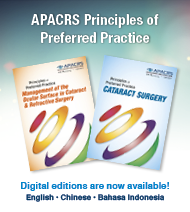 APACRS Principles of Preferred Practice
APACRS Principles of Preferred Practice